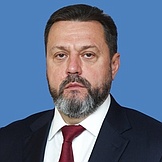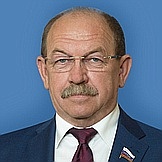Regional flags and emblems


PROFILE
Established 27 December 1943
Capital Astrakhan
The Astrakhan Region is part of the Southern Federal District
Area 49,000 sq km
Population 946 000 (2025)
Ethnic groups
(2020 National Census, %)
Russian – 67,10
Kazakh – 17,62
Tatar – 5,96
Other – 8,22
Administrative divisions (2024)
Municipal districts – 11
City districts – 2
Rural towns – 11
Rural districts – 116
Geography and climate
The Astrakhan Region is located in the southeast of the European part of Russia in the Caspian Lowland in the lower reaches of the Volga River. The southern part of the region is washed by the Caspian Sea.
The region borders on the Republic of Kalmykia and the Volgograd Region, and has a state border with the Republic of Kazakhstan.
The relief of the region is flat with saline-dome uplifts in the Caspian Lowland (Mount Bolshoye Bogdo, 50 m high). The Volga delta contains the Baer Hillocks. There are many salt lakes in the region, the largest of which is Lake Baskunchak.
The Astrakhan Region is located in the semi-desert zone. The climate is sharply continental and arid. The coldest month is January (temperatures average –0.6°C), and the warmest is July (temperatures average +28.1°C).
In the region, there are two state nature reserves (Astrakhan (Biosphere) and Bogdinsko-Baskunchaksky), 12 state nature sanctuaries of regional importance and two nature parks (Baskunchak and Volga-Akhtuba Interfluve).
Government
The legislative branch is represented by the Astrakhan Region Duma, which is the permanent, representative and only body of legislative authority in the region.
The Astrakhan Region Duma has 44 deputies elected for five years, with 22 of them running in single-member constituencies and the other 22 in the single electoral district, where winners are identified in proportion to the number of votes cast for lists of candidates nominated by electoral associations.
The current Astrakhan Region Duma was elected in September 2021. Its term expires in September 2026.
The system of executive bodies of the Astrakhan Region includes the Governor of the Astrakhan Region, the Government of the Astrakhan Region, and other bodies of executive authority of the region. The Government of the region is the permanent supreme collegial executive body of the Astrakhan Region.
The Governor of the Astrakhan Region is the region’s highest-ranking official, who runs the executive branch, forms the Government of the region, appoints and dismisses the Vice-Governor – Chairman of the Government of the Astrakhan Region. He is elected for five years by Russian citizens who permanently reside in the region. The term of the incumbent Governor expires in September 2029.
Economy and natural resources
The Astrakhan Region has one of the most dynamically developing economies in the Southern Federal District. The share of industry in the regional GDP is about 50%. Mineral extraction, manufacturing, as well as energy, gas and water production and distribution are the most important sectors of the regional economy.
The Astrakhan Region is one of Russia’s leading areas in terms of the production of natural gas, sulfur and oil products (Gazprom Dobycha Astrakhan, LUKOIL-Nizhnevolzhskneft). Large oil and gas deposits were discovered in the northern part of the Caspian Sea. Currently, they are being explored and developed. In the region, there is a unique salt lake, Baskunchak, which is the main base for the production of salt for food and technical uses in Russia (Russol-Baskunchak branch of Russol). The unique sulphide mud of the lake is similar in content and effect to that of the Dead Sea.
The geopolitical position of the Astrakhan Region historically predetermined it as the location for a powerful shipbuilding and shiprepair complex, which is one of the most important in the country. The region’s enterprises are able to build and repair ships of any class and purpose, as well as drilling rigs for the development of oil and gas fields on the sea shelf (Guzhvin Shipbuilding and Shiprepairing Plant, Astrakhan Shipbuilding Production Association, Krasnye Barrikady Shipbuilding Plant, Lenin Shipbuilding and Shiprepairing Plant, Lotos Shipbuilding Plant).
Electricity, gas and water are produced and distributed by thermal power stations and combined heat and power stations. About 90% of the region has a gas supply.
The share of agriculture in the regional GDP does not exceed 7%.
Vegetables, melons, rice, as well as meat, wool and milk predominate in agricultural production. The most important branch of the region's agriculture is fishing. About 30 species of fish living in the reservoirs of the region and in the Caspian Sea are of commercial importance.
The main areas of agribusiness are crop production (production of tomatoes, potatoes, grains and watermelons), seed production and livestock breeding (cattle, sheep and poultry farming).
The favourable geographical location of the Astrakhan Region due to its access to the Caspian Sea plays an important role in the system of international Euro-Asian transport routes. The North-South international transport corridor runs through the region, providing the shortest route between the countries of South and South-East Asia and central Russia as well as Europe. The share of the transport sector in the regional GDP is about 7%, and there is a stable increase in transit cargo flows through the territory of the Astrakhan Region. The Astrakhan Airport serves international and local destinations.
The Astrakhan Region’s traditional industries are the construction industry, wholesale and retail trade and recreational services.
Culture and tourism
The Astrakhan State United Historical and Architectural Museum Reserve is the largest museum association on the Volga. The Astrakhan Kremlin is a model of military engineering architecture. This unique architectural ensemble of the 16th-20th centuries occupies a leading place in the historical and cultural heritage of the Astrakhan Region.
Famous far beyond the region are the Kustodiyev and the Khlebnikov house museums, the Dogadin Astrakhan State Picture Gallery, the Ulyanov Memorial House Museum, the unique Russian Watermelon Museum, the distinctive museum of the history of medicine development, the museum of the history of fishing, the Selitrennoye Gorodishche archaeology monument and the Saray-Batu (capital of the Golden Horde) tourist centre.
The cornerstone of medical and health tourism in the region is Russia’s oldest spa resort of Tinaki, opened in 1820.
The full beauty of nature in the region can be seen in the Volga delta in the Astrakhan State Reserve (Volga-Akhtuba floodplain), where there are unique lotus fields. Cruises are available along the main rivers of the region, the Volga and the Akhtuba.


